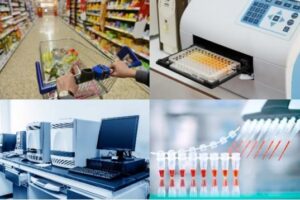Members of the Verification/Validation subgroup of IAFP’s Analytical Methods Professional Development Group (PDG) published a series of articles in Food Protection Trends discussing validation of new food matrices for use with accredited rapid methods. The focus has been on determining a more practical approach for conducting these type of studies. This most recent article “Evaluating Microbiological Method Equivalence – A Decision Guide” appears in the May/June 2023 issue of Food Protection Trends.
The selection of a validated microbiological method, whether a reference method or alternative rapid method, is a critical decision that affects a company’s assessment of the appropriateness of their Food Safety system. There are various factors that a laboratory can consider when determining which equivalent method to use including cost, time to results, or an affinity for a method they have been using for years. Many circumstances can arise that cause a laboratory to change methods. In such an event, how is a laboratory to determine whether two methods are equivalent to one another if neither of them is a reference method? A thought process to guide this decision is outlined in this article, providing a rationale to determine equivalency between a variety of accredited methods validated for the same matrix and sample size. This allows flexibility and choice so that laboratories are able to meet critical needs efficiently when situations arise such as kit shortages, equipment malfunction, and increasing costs.
Past publications in Food Protections Trends by the Validation and Verification Subgroup include:
“Alternative Approaches for Qualitative Microbiological Method Matrix Additions”
“Microbiological Detection Methods — Assuring the Right Fit”
“Selection of Pathogen Strains for Evaluating Rapid Pathogen Test Methods Applied to New Matrices”


